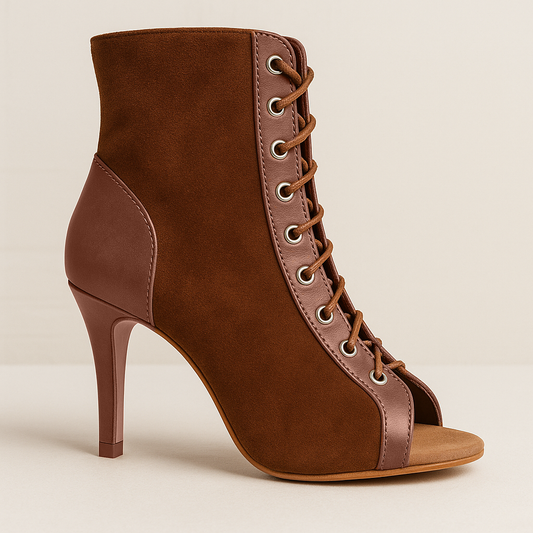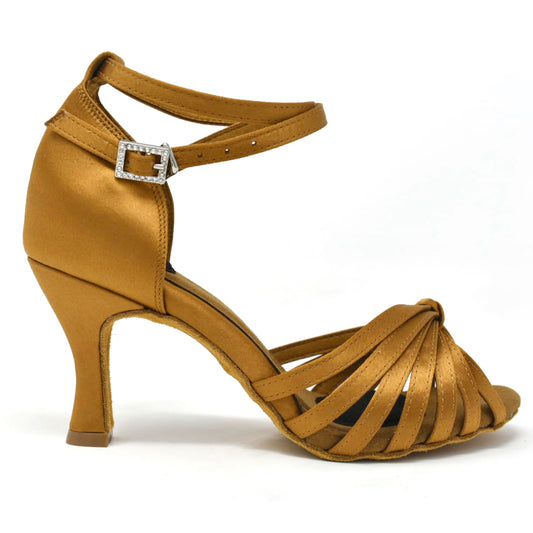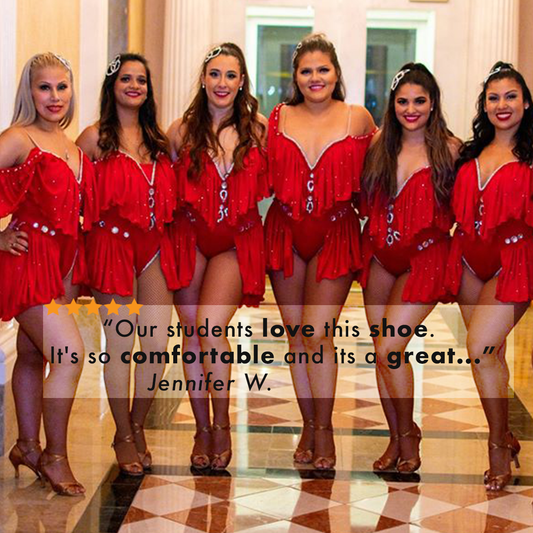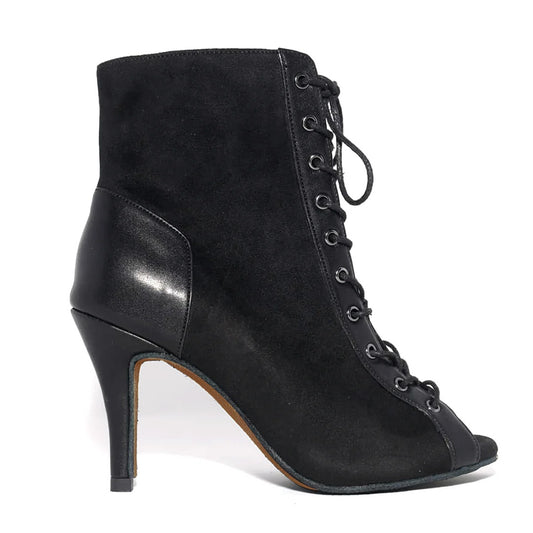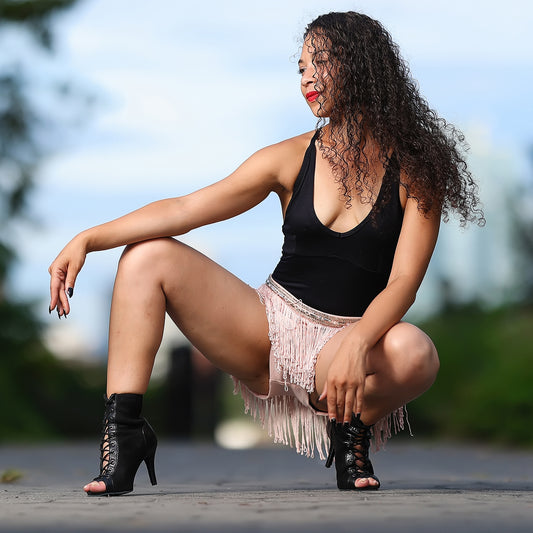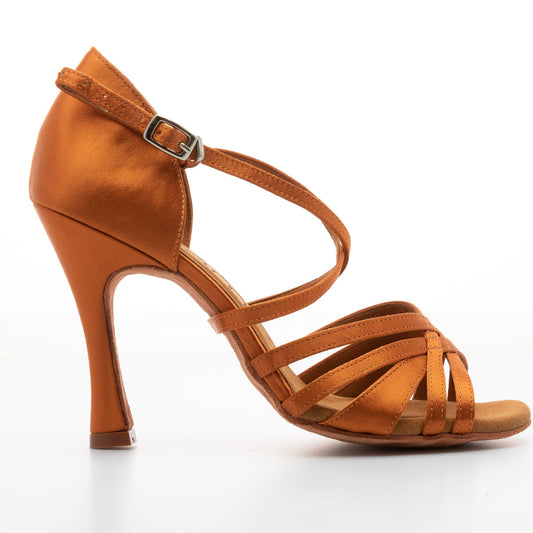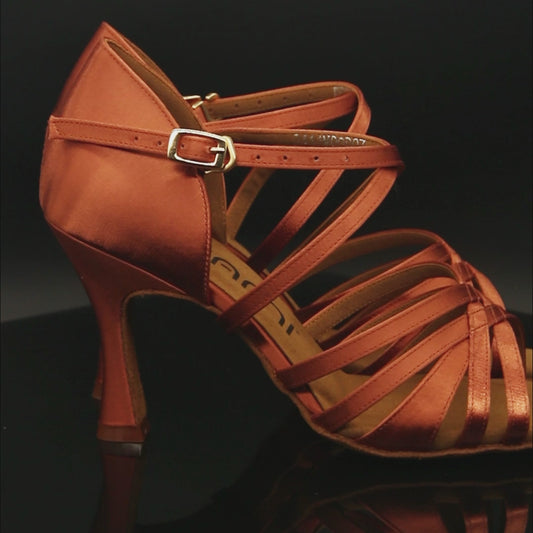
Photo Credit: c&en
Shoes, including Latin dance shoes, Bachata dance shoes, and Kizomba dance shoes, are often made with two kinds of leather material, genuine leather, and vegan leather. Most people prefer real leather because the material is durable and luxurious. But it’s pretty expensive too.
Although we offer a small collection of Latin dance shoes crafted with genuine leather, the majority of our footwear is made with vegan leather - and for good reasons.
As you know, we’re facing worsening global pollution and the leather industry is a huge part of that. Treating leather requires chemicals, such as chromium, formaldehyde, and dyes that pollute the soils and waters. Transporting genuine leather and maintaining the leather material adds to the overall costs of selling goods made with real leather.
On top of that, animals are farmed and killed for their hide. For instance, calfskin - one of the supplest and most expensive types of leather - is made by skinning calves as young as 3 months old. It’s expensive so it’s often used to craft high-end leather goods, particularly designer shoes and bags.
Vegan leather isn’t the ultimate solution as far as minimizing pollution goes. However, processing the material is less destructive to the environment compared to treating real leather. Also, no animal is sacrificed for the hide.
If you love the look of genuine leather but you’re looking for an alternative, vegan leather makes a terrific footwear material. It looks so much like the real thing that it’s hard to distinguish one from the other.
How to Tell if It’s Vegan Leather
Vegan leather is made from a polyurethane material that's laminated to a base material such as rayon, cotton, nylon, or polyester textile. It has artificial grain patterns to mimic the appearance and texture of animal leather. To achieve suppleness and flexibility, lubricants and plasticizers are added to the faux leather material. The result is a leather alternative that looks and feels like real leather.
You can tell that the shoes you’re wearing are made with vegan leather because of the following characteristics:
- Uniformed grain pattern
- Thinner material
- Strong adhesive smell
- Smoother texture
- Smooth edges
Vegan leather is almost as durable as the real thing and is just as easy to maintain. It comes in an array of colors, finishes, and textures. Here at Yami, our faux leather dance shoes feature vegan leather uppers, microfiber outsoles instead of suede leather, and microfiber lining instead of soft calfskin, goatskin, or sheepskin.
How to Tell if It’s Real Leather
Real leather is made from animal hide. The traditional processing of real leather - called chrome tanning - is complex and requires the use of solvents, dyes, and other chemicals to achieve the right color as well as prevent the animal hide from rotting.
While some tanning companies dispose of these leather tanning chemicals properly, others do not. The chemicals often pollute the soil and waterways.
Vegetable tanning is the more eco-friendly way of processing animal leather. The process uses vegetable-based tanners to dye the leather and make it resistant to rotting. The thing with vegetable-tanned leather, however, is that it’s very prone to staining. The slightest liquid spills could ruin the leather.
Between Chrome tanning and vegetable tanning, the latter is the older method of processing leather, dating back to 6000 BC.
You can tell that the shoes you’re wearing are made with real leather because of the following characteristics:
- Distinct leather smell
- Thick material, less flexible compared to vegan leather
- Inconsistent grain or pore patterns
- Rough edges
- Coarse texture
In terms of maintenance, both vegan and real leather are taken care of the same way. Both materials will benefit from regular brushing, cleaning, and waterproofing. But between the two, genuine leather is more prone to staining and drying out. That’s because the material is porous, it could absorb liquids. Real leather is also sensitive to strong cleaners and solvents. Vegan leather isn’t as vulnerable to stains because it does not absorb liquids. It wipes clean and won’t dry out, crack, or peel when taken care of properly.
Why We Love Vegan Leather
We’re huge fans of cruelty-free products that’s why most of the Latin dance shoes, Zouk dance shoes, and Bachata dance booties that we offer are made with vegan leather. But to cater to some of our customers, we also offer a small selection of Latin dance shoes crafted from fine leather so there is something for everyone at Yami!
One thing to remember though, genuine leather tends to stretch over time. In most cases, the material stretches too much so the fit of the shoes won't be as good as time goes by. Because you're using the shoes most times, they end up being too big. While PU material stretches over time, it only does so to a certain point. The fit remains true to size far longer than shoes made with real leather.
References
https://leafysouls.com/blogs/vegan-blog/faux-leather-vs-vegan-leather
https://buyleatheronline.com/en/blog/faux-leather-vs-real-leather-vs-vegan-leather-n88
https://www.btod.com/blog/real-vs-bonded-vs-faux-leather/
https://www.leatherhoney.com/blogs/leather-care/5-ways-to-tell-the-difference-between-real-and-fake-leather
https://www.leatherhoney.com/blogs/leather-care/5-ways-to-tell-the-difference-between-real-and-fake-leather
https://www.misiuacademy.com/types-of-shoe-leather-guide/

